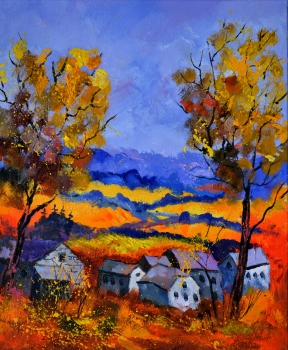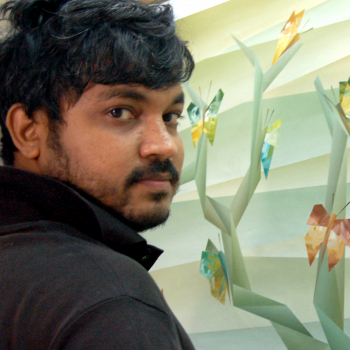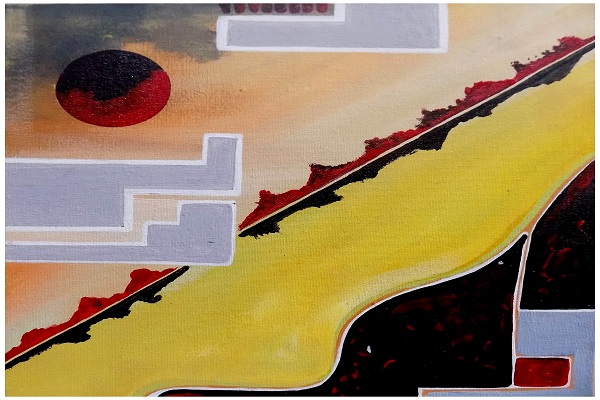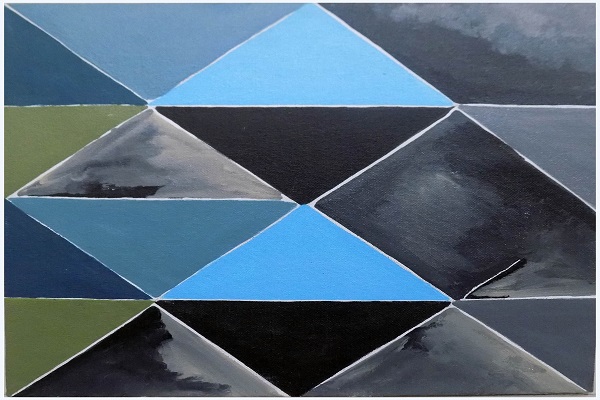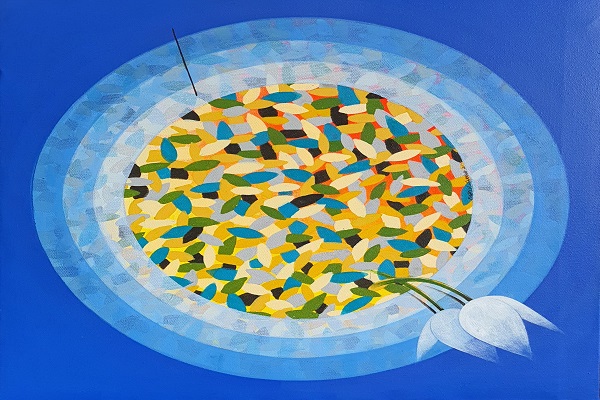
In the vibrant world of art, abstract paintings stand out as captivating expressions of creativity and imagination. Abstract art is a genre that breaks away from the constraints of representing realistic images and instead focuses on conveying emotions, ideas, or concepts through non-representational forms and colours. This essay explores the captivating nature of fluid forms in abstract art paintings, particularly in the context of an online art gallery.
Abstract art paintings can be defined as artistic creations that do not attempt to accurately depict recognizable objects or scenes. Instead, they emphasize the use of shape, colour, line, and texture to convey an emotional or conceptual message. By abstracting or distorting elements from the visible world, abstract artists delve into the realm of the subjective, inviting viewers to interpret the artwork based on their own experiences and perceptions.
One of the remarkable aspects of abstract art is its fluidity of forms. Unlike representational art, which often adheres to strict proportions and recognizable shapes, abstract art embraces a sense of freedom and experimentation. It allows the artist to explore the boundless possibilities of form, creating compositions that may appear spontaneous, organic, or even chaotic. The fluidity of forms in abstract art enables artists to evoke a wide range of emotions and ideas, transcending the limitations of the physical world and inviting viewers to engage with the artwork on a deeper, more intuitive level.
This essay will delve into the captivating nature of fluid forms in abstract art paintings, analysing how artists utilise this expressive technique to communicate their artistic vision. Furthermore, it will discuss the role of online art galleries in showcasing abstract art to a wider audience, enabling viewers from around the world to appreciate and engage with these mesmerising works of art. By examining the unique qualities of fluid forms in abstract art, we can gain a deeper understanding of the power and allure of this dynamic art form.
Understanding Fluidity in Abstract Art
Fluidity lies at the core of abstract art, serving as a potent means of expressing movement and dynamism within a painting. Abstract artists employ various techniques to evoke a sense of flow and motion, capturing the essence of energy in their compositions. By incorporating fluid lines, shapes, and brushstrokes, artists create a visual language that suggests a perpetual state of flux. This representation of movement brings life and vitality to the artwork, engaging the viewer in a dynamic and captivating experience. In the context of an online art gallery, the portrayal of fluidity in abstract art allows viewers to immerse themselves in the artwork, despite the physical limitations of the digital medium.
Gestural brushwork and spontaneous techniques play a pivotal role in conveying the fluidity of forms in abstract art. Artists often embrace a gestural approach, employing bold and sweeping brushstrokes with a sense of immediacy and spontaneity. Through these expressive gestures, artists capture the energy and rhythm of their creative process, resulting in paintings that appear to be in constant motion. The textural qualities created by the layering and interplay of brushstrokes further enhance the sense of fluidity, adding depth and dimension to the artwork. Online art galleries provide a platform for artists to showcase these gestural techniques in high-resolution images, enabling viewers to appreciate the intricate details and dynamic qualities of the artwork.
Abstract art often explores the realm of organic and amorphous shapes, further emphasising the fluidity inherent in the genre. Artists experiment with non-representational forms that mimic natural elements such as flowing water, swirling clouds, or shifting landscapes. These organic shapes, devoid of specific boundaries or definitions, invite viewers to interpret and engage with the artwork on a subjective level. The exploration of organic and amorphous shapes in abstract paintings encourages a sense of freedom and imagination, as viewers are encouraged to find personal connections and narratives within the artwork. Online art galleries provide a platform for artists to showcase these captivating shapes to a global audience, fostering a diverse and inclusive appreciation of abstract art.
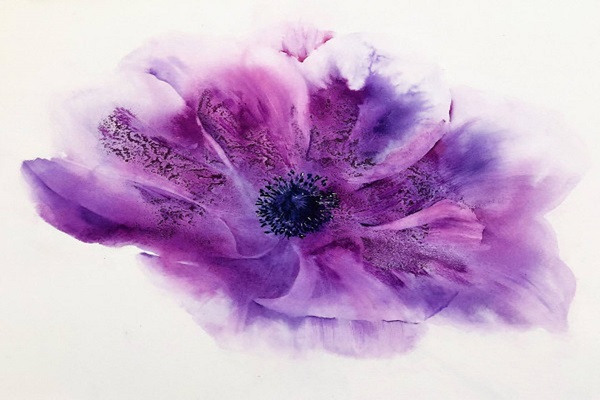
Read More: Abstract Paintings of Famous Hindu Gods
Techniques and Methods Used to Achieve Fluid Forms
Abstract artists employ various techniques and methods to achieve fluid forms in their artwork. Pouring and dripping techniques create spontaneous patterns and shapes, while the blending and layering of colours add depth and complexity.
Pouring and dripping techniques
One of the techniques frequently employed by abstract artists to achieve fluid forms is pouring and dripping. Artists pour or drip paint onto the canvas, allowing gravity to guide the flow of the colours. This technique creates spontaneous patterns and organic shapes as the paint interacts with the surface, resulting in a sense of movement and fluidity. The online art gallery platform enables artists to showcase the intricate details of these pouring and dripping techniques through high-resolution images, allowing viewers to appreciate the dynamic nature of the artwork.
Blending and layering of colours
The blending and layering of colours are essential methods used by abstract artists to achieve fluid forms in their paintings. Artists carefully select and mix colours to create harmonious or contrasting palettes, applying them in overlapping layers. Through this process, they create depth and visual complexity, as the colours interact and blend together. The layering of colours adds a sense of translucency and depth to the artwork, enhancing the illusion of movement and fluidity. Online art galleries provide an immersive viewing experience, allowing viewers to zoom in and examine the intricate details of the colour blending and layering techniques employed by artists.
Use of non-traditional tools and materials
Abstract artists often explore the use of non-traditional tools and materials to achieve fluid forms in their artwork. They may employ unconventional implements such as sponges, palette knives, or even their hands, to apply and manipulate the paint. These non-traditional tools and materials allow for a more direct and tactile approach, enabling artists to create spontaneous and expressive brushstrokes. The exploration of non-traditional tools and materials adds an element of experimentation and innovation, contributing to the fluidity and dynamism of the artwork. Through online art galleries, artists can share their unconventional techniques with a global audience, inspiring other artists and viewers alike.
Also Check: Discovering the Different Styles of Abstract Art Paintings
The Role of Colour in Enhancing Fluidity
Colour plays a vital role in enhancing the sense of fluidity in abstract art, enriching the visual experience and evoking emotions within the viewer. Through carefully selected colour palettes, gradients, and symbolic associations, artists create a captivating interplay of hues that heightens the dynamic nature of fluid forms.
Colour palettes that evoke a sense of fluidity
Abstract artists utilize colour palettes that evoke a sense of fluidity, often opting for shades and tones that are reminiscent of natural elements such as water, air, or fire. Cool colours like blues and greens can suggest the flow of water, while warm colours like oranges and yellows can evoke energy and motion. By harmonizing and contrasting these colours within the artwork, artists create a visual dialogue that enhances the fluidity of forms. Online art galleries enable viewers to experience the full impact of these colour palettes through high-resolution images, allowing for an immersive exploration of the artwork.
Use of gradients and transitions to create a sense of movement
Gradients and transitions in colour are effective tools employed by abstract artists to create a sense of movement and flow. By seamlessly blending colours or transitioning from one shade to another, artists simulate the effect of motion and change. Gradual shifts in colour intensity or hue can suggest fluidity as if the forms are in constant transformation. The online art gallery platform provides an opportunity for artists to showcase the intricate details of these gradients and transitions, enabling viewers to appreciate the subtlety and nuance of the artwork.
Symbolic associations of colours in relation to fluid forms
Colours in abstract art can also carry symbolic associations that enhance the perception of fluid forms. For example, blue can represent tranquillity or depth, while red may evoke energy or passion. Artists may intentionally leverage these associations to reinforce the emotional impact and narrative of their artwork. The symbolic significance of colours in relation to fluid forms adds another layer of depth and meaning to the artwork, inviting viewers to engage with the subjectivity of their interpretations. Online art galleries offer a platform for artists to communicate these symbolic associations to a diverse audience, fostering a deeper appreciation and understanding of the artwork.
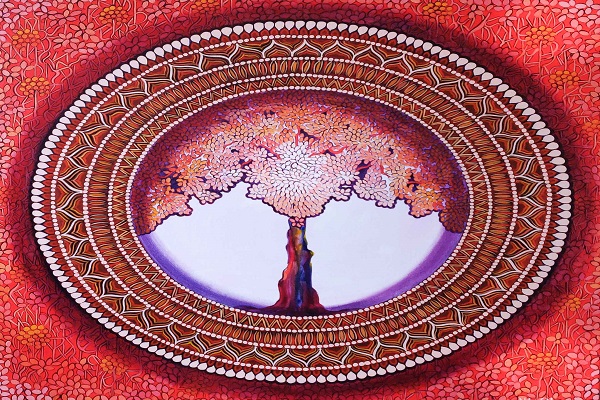
Interesting Blog: Abstract Art - A kick to Human's Brain and Creativity
Interpreting Fluidity in Abstract Art
One of the intriguing aspects of interpreting fluidity in abstract art is its subjective nature. Abstract art, with its emphasis on non-representational forms, allows for a wide range of interpretations. Each viewer brings their unique perspective, experiences, and emotions to the artwork, resulting in diverse and personal interpretations. Online art galleries provide a platform for viewers from around the world to engage with abstract art, fostering a global exchange of perspectives and enriching the understanding of fluidity in these artworks.
Fluid forms in abstract art have the power to evoke a range of emotional responses in viewers. The dynamic and organic nature of fluid forms can elicit feelings of serenity, excitement, awe, or even contemplation. The flow and movement portrayed in abstract paintings can resonate with viewers on a subconscious level, triggering emotional connections and personal reflections. Online art galleries enable viewers to explore and connect with these emotional responses, creating a space for contemplation and introspection.
Fluidity in abstract art communicates a sense of energy, rhythm, and vitality. The fluid forms, whether they are depicted through gestural brushwork or the use of pouring techniques, suggest a state of motion and liveliness. The interplay of lines, shapes, and colours creates a visual language that conveys a vibrant and dynamic atmosphere. Online art galleries provide a digital platform where viewers can appreciate the energy and vitality communicated through fluidity, despite the physical absence of the artwork.
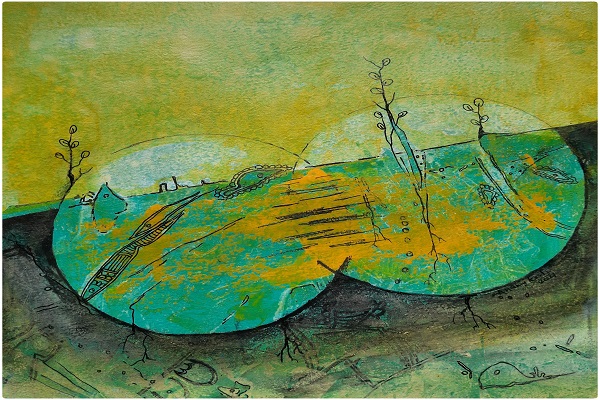
Read More: What Makes Abstract Art So Expensive?
Conclusion
In the realm of abstract art, the exploration of fluidity continues to captivate artists and viewers alike. The fluidity of forms communicates energy, rhythm, and vitality, allowing for a deeper and more intuitive connection with the artwork. It invites viewers to embark on a personal journey of interpretation, embracing the subjective nature of their experience. Through the interplay of colours, shapes, and brushwork, abstract art's fluidity sparks emotions, evokes contemplation, and fosters a universal appreciation of artistic expression.
In conclusion, the captivating nature of abstract art's fluidity is a testament to the power of artistic creativity and the boundless possibilities of non-representational forms. Online art galleries serve as gateways to this mesmerizing world, promoting the exploration and appreciation of fluid forms in abstract art. So, let us continue to delve into the captivating nature of fluidity in abstract art, embracing the dynamic and vibrant expressions that artists create, and engaging with online art galleries like IndianArtIdeas to discover new and captivating artworks.













